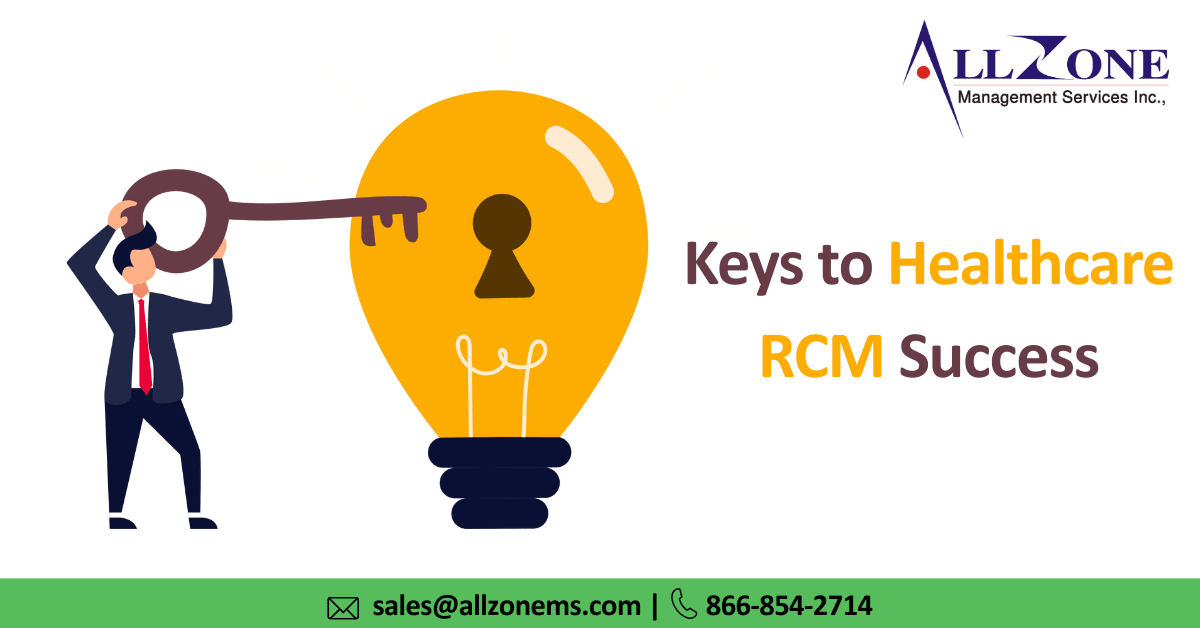In 2024, factors like declining reimbursement rates, the shift towards value-based care, and ever-changing regulations demand a proactive approach to improve RCM.
Here, we explore four key strategies to optimize your healthcare revenue cycle and ensure financial stability in the coming year.
1. Break down Silos: Merging Front-End and Back-End Functions
Many healthcare organizations struggle with a disconnect between front-end (patient registration, scheduling) and back-end (billing, coding) teams. This siloed approach can lead to errors in data entry, missed charges, and ultimately, lost revenue. Here’s how to bridge the gap and improve RCM:
-
- Cross-Training: Encourage staff across departments to gain a basic understanding of each other’s roles. This fosters better communication and collaboration.
- Shared Metrics and Goals: Establish key performance indicators (KPIs) that both front-end and back-end teams are accountable for. This creates a shared vision and incentivizes cooperation to improve RCM.
- Unified Technology Platform: Invest in an integrated RCM system that seamlessly connects front-end and back-end processes. This ensures data accuracy and facilitates real-time communication, ultimately improving RCM efficiency. By fostering a more unified approach, you can streamline the patient experience, improve data capture, and reduce claim denials.
2. Leverage the Power of Data Analytics to Improve RCM
Data is the lifeblood of effective RCM in 2024. Modern practice management software and analytics tools capture a wealth of information on patient demographics, coding practices, claims submissions, and denial patterns. The key lies in harnessing this data to identify areas for improvement in RCM:
-
- Track Key Metrics: Monitor KPIs like clean claim rate, denial rate, days in accounts receivable (AR), and collection rate. Analyze trends to identify bottlenecks and inefficiencies in your revenue cycle management processes.
- Denial Management: Utilize data to drill down into denial reasons and identify common errors. Implement targeted staff training and refine coding practices to reduce denials, improving RCM performance.
- Predictive Analytics: Leverage advanced analytics to predict potential issues. For example, identify patients with high out-of-pocket costs or complex insurance coverage to proactively address potential collection challenges and improve RCM. By leveraging data analytics, you can gain valuable insights into your RCM health, optimize workflows, and maximize revenue capture.
3. Enhance Patient Financial Engagement: Collecting Payments Upfront to Improve RCM
The patient financial experience is a critical component of revenue cycle management (RCM). Transparency and clear communication about costs upfront can significantly improve payment collection and ultimately enhance RCM, which is why revenue cycle management companies healthcare experts emphasize patient-centered financial practices:
-
- Price Transparency: Develop a clear and accessible system for patients to understand potential charges for services before their visit. This fosters trust, reduces billing surprises, improves patient satisfaction, and contributes to improved RCM outcomes.
- Patient Responsibility Estimation: Utilize software to generate accurate estimates of patient responsibility based on insurance coverage. This empowers patients to manage their healthcare costs and improves RCM by facilitating upfront collections, a strategy that revenue cycle management companies healthcare professionals consistently recommend.
- Flexible Payment Options: Offer patients a variety of payment methods, including online portals, credit card options, and installment plans. This flexibility enhances patient satisfaction and leads to improved RCM by increasing the likelihood of on-time payments.
- Upfront Collections: Encourage patients to settle any estimated patient responsibility at the time of service. This improves cash flow and reduces bad debt, leading to a more stable financial future for your practice and better RCM.
By prioritizing patient financial engagement, healthcare providers can empower patients to manage their healthcare costs and ensure timely collections, driving more effective RCM. The insights offered by revenue cycle management companies healthcare further illustrate the importance of these patient-focused financial strategies in optimizing RCM outcomes.
4. Embrace Automation: Streamline Workflows with Technology to Improve RCM
Technology plays a crucial role in streamlining RCM processes and reducing administrative burdens. Here are key areas where automation can significantly benefit your practice and improve RCM:
-
- Automated Eligibility Verification: Prior to each visit, utilize software to verify patient insurance eligibility and benefits. This eliminates the need for manual inquiries and reduces the risk of denied claims, improving RCM efficiency.
- Automated Prior Authorizations: Implement technology solutions that automate the process of requesting prior authorizations from insurance companies. This saves time, minimizes manual errors, and ensures timely approvals, all of which contribute to improved RCM.
- Automated Claim Submission and Follow-Up: Leverage software to submit claims electronically and automate follow-up processes to expedite payments from payers. This improves cash flow and reduces administrative burden, allowing staff to focus on higher-value tasks.
- Coding Automation: Explore advanced coding software that assists with accurate coding based on documentation and reduces coding errors. This improves accuracy and efficiency in the RCM process. By embracing automation, you can free up staff for higher-value tasks like patient

